Strong Resilient Economy
- Peaceful domestic environment, favorable government policies and improved investor confidence have facilitated all the key sectors to demonstrate a commendable performance.
- The improved performances in all key sectors of the economy contributed towards the high economic growth.
- With a 56.8% contribution, the services sector remains the largest contributor to the national economy.
- The strong economic performances in Sri Lanka have lifted country’s per capita income substantially, which has enabled the country to be graduated to middle – income status from the list of Poverty reduction & Growth Trust (PRGT) eligible countries.
- The government has planned to transform Sri Lanka into a strategically important economic centre by developing five strategic hubs; a knowledge hub, a commercial hub, a naval & maritime hub, an aviation hub, and an energy hub, taking the advantage of Sri Lanka’s strategic location & resources.
Supportive Government Policies
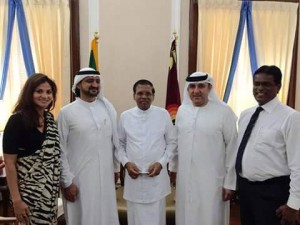
Sri Lanka pioneered South Asia’s economic liberalization over three decades ago. Liberalizing many areas of the economy, the government has embraced strategies and policies that are more than conducive for international investment. In fact the policy environment is undoubtedly, compelling.
The following transparent investment laws aim to foster foreign direct investments.
Read More
- Total foreign ownership is permitted across almost all areas of the economy.
- No restrictions on repatriation of earnings, fees, capital, and on forex transactions relating to current account payments.
- Safety of foreign investment is guaranteed by the constitution.
- Existence of a transparent and sophisticated legal and regulatory framework. Covering all prerequisite business law enactments.
- Bilateral investment protection agreements with 28 countries and double taxation avoidance agreements with 38 countries
Sri Lanka is a founder member of the Multilateral Investment Guarantee Agency (MIGA), an investment guarantee agency of the World Bank. This provides a safeguard against expropriation and non-commercial risks.
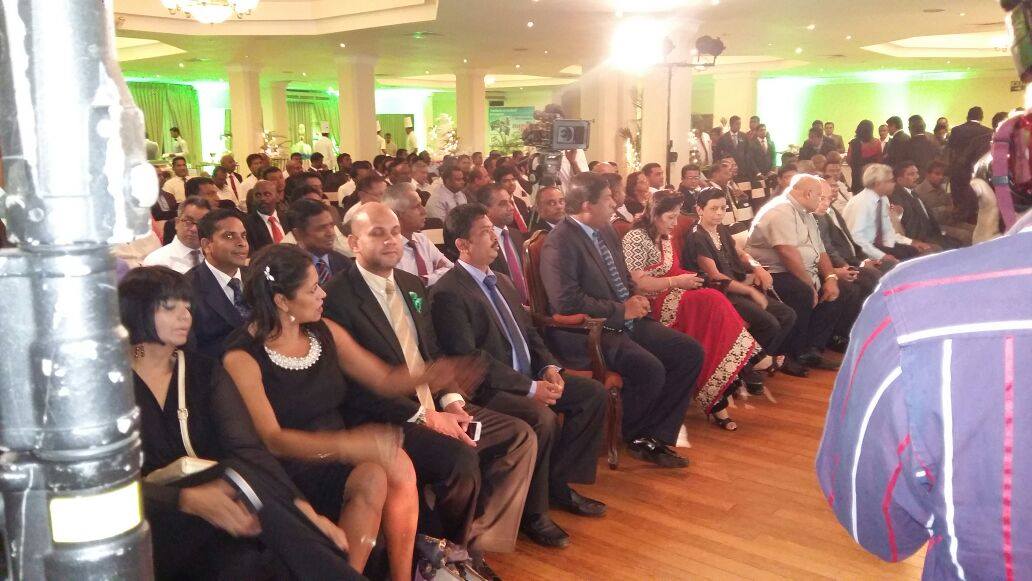
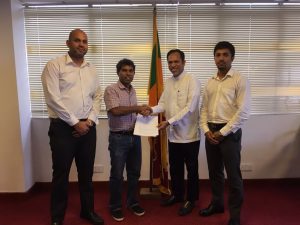
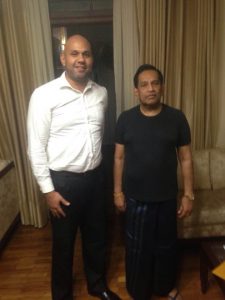
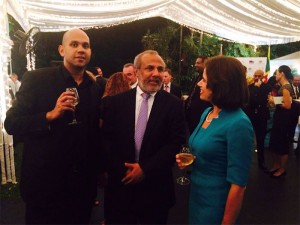
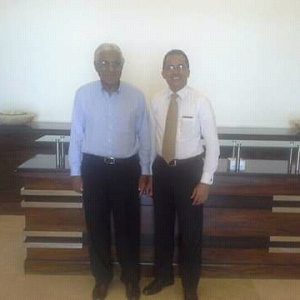
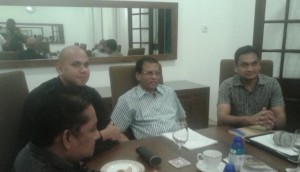
Educated and Adaptable Workforce
Sri Lanka possessed the most literate population in South Asia and one of the highest in the developing world with a literacy rate of 92.2% (91.1% and 93.5% respectively for females and males).
Extensive investment in public education has produced a workforce that is not only competent but intelligent, trainable and comfortable with high tech production and services.
Approximately 50% of the students who have completed higher education are trained in technical and business disciplines. English is widely spoken and is the main language used by the business community.
Well educated and energetic, skilled and semi-skilled human resources are readily available at competitive wage rates.
Social Infrastructure
Sri Lanka leads the South Asian region in human development indices with its high literacy rate and national health indicators. The country boasts a life expectancy of 70.3 years for males and 77.9 years for females and an infant mortality rate of 8.5 per 1,000 live births, which ranked it 92 of 186 countries.
Sri Lanka is a firm proponent of international laws and UN’s rights of labour, children and women. The country has an edge over its regional competitors because of its stringent adherence to child labour laws and endorsement of gender equality.
Location and Connectivity
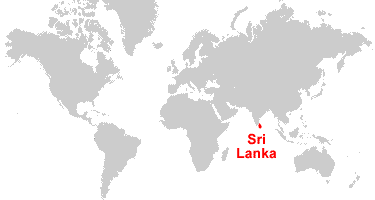 Sri Lanka is situated at the crossroads of major shipping routes connecting South Asia, Far East and the Pacific with Europe and the Americas. Sri Lanka is strategically located next to the fast growing Indian sub-continent with close proximity to Southeast Asia and the Middle East. The country has strong air connectivity with over 100 weekly flights to India alone.
Sri Lanka is situated at the crossroads of major shipping routes connecting South Asia, Far East and the Pacific with Europe and the Americas. Sri Lanka is strategically located next to the fast growing Indian sub-continent with close proximity to Southeast Asia and the Middle East. The country has strong air connectivity with over 100 weekly flights to India alone.
Sri Lanka is connected to the SEA-ME-WE III and IV (South East Asia – Middle East – Western Europe) fibre optic communication backbone with over 11 communication satellites orbiting above the south of the country.
Access to Key Markets
Sri Lanka is the only country to have Free Trade Agreements with both India and Pakistan, giving duty free access to over 1.3 billion consumers from the island.
The Indo-Sri Lanka Free Trade Agreement (ISLFTA), which came into effect in year 2000, provides strategic access from Sri Lanka for over 4,200 products (at zero duty) to India, which is the world’s second most populous market. The Pakistan – Sri Lanka Free Trade Agreement (PSLFTA), which came into effect in year 2005, provides strategic access from Sri Lanka for nearly 4,500 products (duty free from 2008) to the Pakistan market.
Since the agreement was signed bi-lateral trade between Sri Lanka and India have grown more than 5 times and bi-lateral trade between Sri Lanka and Pakistan have grown 3 times.
In addition, by locating in Sri Lanka, a company can gain preferential trade access to two large regional blocs under the South Asian Free Trade Area (SAFTA) and the Asia–Pacific Trade Agreement (APTA).
Fast Developing Infrastructure
 The Sri Lankan government has launched an ambitious program of physical infrastructure development to completely upgrade the sea, air, road, power and telecom backbone of the country.
The Sri Lankan government has launched an ambitious program of physical infrastructure development to completely upgrade the sea, air, road, power and telecom backbone of the country.
Read More
The following are the main features of this program:
- Sea Port and Airport Development
The Sri Lankan government has declared its intention to develop the country as a leading regional aviation, navigation and trading hub in South Asia. Therefore, the development of maritime & aviation transportation is at the forefront of the government’s infrastructure development agenda. The focus of these developments is to expand the capacity and improve the efficiency of existing ports through modernization and construction of new ports and airports in strategic locations.
Major Sea Port and Airport development:
- Colombo South Port Expansion
The Colombo South Port expansion project with three terminals, each terminal having capacity of 2.4 million TEUs per annum, will increase the capacity of the Colombo Port by 160% upon completion. Construction work of the breakwater has been completed. The first terminal, a join venture between the Sri Lanka Ports Authority and China Merchant Holdings Ltd, was built under a 35 year build operate and transfer agreement with SLPA. The terminal was opened for commercial operation on 5th August 2013.
- Hambantota Port Development
Phase I of the project, the Mahinda Rajapaksa Magampura Port, was inaugurated in November 2010. The port is expected initially to function as a service and industrial port and later be developed to handle transshipment cargo. Phase II of the port is underway at an estimated cost of US$ 800 Mn. The port is ideally located to serve the main East-West shipping lane connecting Europe and the Middle-east with South East Asia.
The bunkering facilities at the Port of Hambantota, set up at a cost of US$ 76.5 million, and the tank farm has commenced commercial operations. Out of the 14 tanks it has, eight tanks will be used to store marine fuel, three will store aviation fuel and three remaining tanks will be used to store liquid petroleum.
The aviation fuel stored in the Hambantota Port is to be used for the Mattala Airport, the second international airport currently being built in Hambantota.
- Expansion of Bandaranaike International Airport
A project is under way to expand the island’s first international airport at Katunayake, 35 km north of Colombo. The project includes the expansion of the transit area, construction of new baggage-reclaim area, multi storied car park and widening of the existing runway. A feasibility study is being carried out for a second runway.
- Development of a second International airport at Mattala
The construction of the new international airport at Mattala in the southern Hambantota district is carried in two phases. The first phase was completed and opened on 18th March 2013. That includes one runway and a taxi way that will be expanded in the second stage to allow for larger planes, including the latest airbus A380, to land. This air port will open up the vast southern and eastern areas of Sri Lanka for development including tourism projects. The airport will be in close proximity to the Hambantota port..
- Development of High Mobility Road Network
Road development in the country, which was left behind last few decades due to the war, has been given prominence by the government. The national Road Master Plan has already been prepared, which focuses on the construction of highways, widening of highways, reduction of traffic congestion, road maintenance & rehabilitation and bridge rehabilitation & reconstruction.
It has become an urgent necessity for further investment in road network, thus the development of road network has become a major determinant factor in attracting new investments to the country.
Major road development:
- Colombo – Katunayake Expressway – CKE (25km)
The Colombo – Katunayake Expressway connects the Colombo City and the International Airport at Katunayake. It consists of four Interchanges at New Kelani Bridge, Peliyagoda, Ja-Ela and Katunayake. The Contract value of the project is US$ 292 Mn. Construction was completed and opened for the public on 27th of October 2013 by his Excellency the president Hon. Mahinda Rajapakse. The CKE will reduce the travel time between Peliyagoda and Katunayake to 20 minutes from the earlier time of 1.5 hours using Peliyagoda-Puttalam road (A003). The quick travel between the Bandaranaike International Airport and the capital of the country with enhanced safety will surely help to boost the country’s economy in addition to providing pleasant travel to the road users.
- Southern Highway (126km)
The Southern Expressway is the longest expressway being built in Sri Lanka. The construction of a four-lane highway from Colombo to Matara will be a catalyst for the economic and social development of the Southern region and promotion of and inter-regional transport network. The highway was opened for public on 27th November 2011.
The section of Southern Expressway from Pinnaduwa (Galle) to Godagama (Matara) has been opened to public on 15th March 2014. This section also consists of 4-lane capacity similar to the earlier section from Kottawa to Pinnaduwa. The maximum operating speed for this section is also 100 kmph. Now the Southern Expressway from Kottawa to Godagama (Matara) is in operation. It is expected to extend the Southern Expressway from Matara to Hambantota with the intention of linking Mattala Airport and Hambantota Harbour to the Commercial Capital, Colombo in future.
- Outer Circular Highway – OCH (29.2km)
The outer Circular Highway (OCH) is located in the Colombo Metropolitan Region and passes through two administrative districts, namely Colombo and Gampaha. This highway runs around 20 km away from the City centre of Colombo, connecting radial routes and has a total length of 29.2 km. The northern end of the highway is located at Kerawalapitiya on Colombo-Katunayake Expressway and the southern end is located at Kottawa on Colombo-Ratnapura-Wellawaya-Batticaloa (A004) road where Southern Expressway meets OCH. Outer Circular highway from Kottwawa to Kerawalapitiya will link seven trunk roads and the Colombo – Katunayake and the Southern Expressways.
The expressway is implemented in three phases as given below;
Phase 1: Section from Kottawa to Kaduwela (11km) – Commenced in December 2009. (Phase 1 completed and opened for public in March 2014)
Phase 2: Section from Kaduwela to Kadawatha (8.9km) – Commenced in 2012.
Phase 3: Section from Kadawatha to Kerawalapitiya (9.2km)
- Colombo – Kandy Highway (99km)
The proposed North – East Expressway (Colombo – Kandy Expressway) begins at Kadawatha of the present Colombo – Kandy (A1) Road (at the access point of the Outer Circular Highway) and links with Katugastota– Kurunegala – Puttalam (A10) road at Hedeniya and Kandy– Jaffna road (A9) at Katugastota. The length of this road is 99 km. Construction of the North – East Expressway is mainly divided into two construction phases viz. Phase I (Kadawatha–Ambepussa) – 48.2 km and Phase II (Ambepussa– Katugastota) -50.7 km.
The expressway is expected to be built as a privately financed toll road and will be later expanded to Jaffna and Trincomalee.
The cost for the first phase of the road project is estimated to be one billion US dollars..
- Power & Energy
Development of power & energy sector is a key aspect of the government’s infrastructure development agenda and long term strategies have been introduced with active participation of the private sector, as a key component.
Major power projects in progress
Ambitions planes are under way to increase the national grid from 2817 MW to 4732 MW (by 2016) and to reduce the cost of generation by harnessing the latest clean coal technology.
- Norochcholai Coal Power Project
The construction of first phase of the Norochcholai Coal Power Plant (300 MW) was completed by end of 2010 and was added to the national grid by end of March 2011. The second phase will add another 600 MW to the national grid.
- Upper Kothmale Hydro Power Project (UKHP)
The upper Kothmale project will have an installed capacity of 150MW (consisting of two 75MW units). Construction of the project was completed and connected to the national grid on14th July 2011.
- Telecommunication Infrastructure Development
- SEA-ME-WE IV
Sri Lanka is connected to the South East Asia-Middle East-West Europe 4 (SEA-ME-WE IV) project, the submarine cable system linking South East Asia to Europe via the Indian Sub-Continent and Middle East. The project aims to take these regions to the forefront of global communication by significantly increasing the bandwidth and global connectivity of users along its route between Singapore and France.
SEA-ME-WE 4 fiber optics cables provide a bandwidth capacity of 1.28 terabits per second, with a 25 year guaranteed lifespan for the technology. This revolutionary submarine cable system offers Sri Lanka an immense bandwidth advantage, and paves the way to make Sri Lanka a globally competitive business hub..
Vibrant Business Environment
 Sri Lanka is ranked as the most liberalized economy in south Asia. In 1978, the Island adapted open market free economic policies, and successive governments have further liberalized the economy, leading to deregulation, greater privatization and opening the economy to international competition. Transparent investment laws aim to foster foreign direct investments. Sri Lankan commercial laws are based on British laws and country has a highly independent judicial system.
Sri Lanka is ranked as the most liberalized economy in south Asia. In 1978, the Island adapted open market free economic policies, and successive governments have further liberalized the economy, leading to deregulation, greater privatization and opening the economy to international competition. Transparent investment laws aim to foster foreign direct investments. Sri Lankan commercial laws are based on British laws and country has a highly independent judicial system.
Sri Lanka has dynamic and resilient private sector, which if necessary can be joint venture partners for foreign investors. However, foreign investors are allowed to own 100% ownership of a investment. Concessions granted under an agreement with the Board of Investment – for qualifying investment projects – remain valid over the lifetime of the enterprise.
Quality of Life
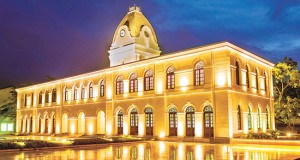
Sri Lanka is truly a great place to live and a great place to work. A country of many facets, if offers a spectrum of experiences, people and places that awaits to be discovered. For those who choose to make Colombo their home, a cosmopolitan living environment awaits. Social life is never a miss in this city, with abundant nightlife, world-class shopping, theatre, cafes, art and host of star class hotels that dot the island.
The expatriates and their families will enjoy a quality living environment in Sri Lanka with comfortable housing, good healthcare and medical facilities, excellent educational institutions with international standards, and world-class recreational sites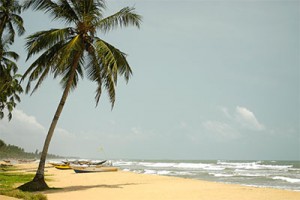
There is a wide selection of comfortable housing in Sri Lanka including luxury condominium apartments ideal for expatriates. Internationally recognized institutions of Healthcare market have chosen Sri Lanka as a destination for health tourism. A dozen private and public hospitals operate in Colombo with.
Seven UNESCO World Heritage sites, a salubrious climate in the central hill country, 250 acres of botanical gardens, 15 Wildlife and Nature reserves and miles of pristine beach, is concentrated within a mere 645,610 square kilometers. Sri Lanka is renowned for its varied biodiversity fauna and flora.